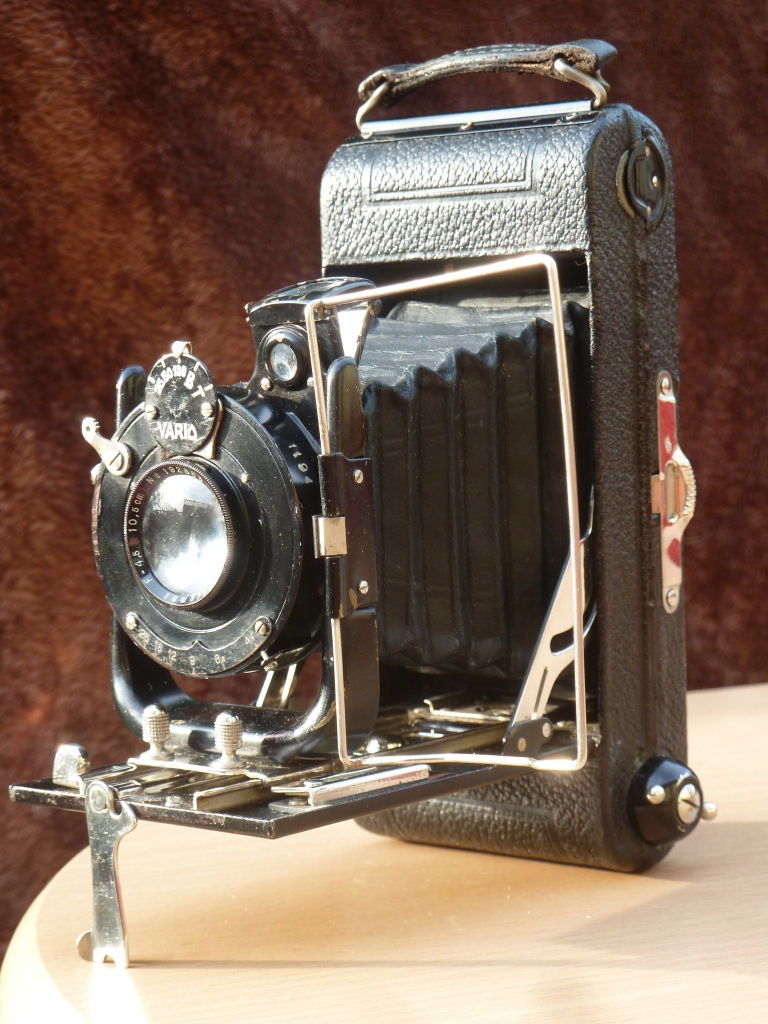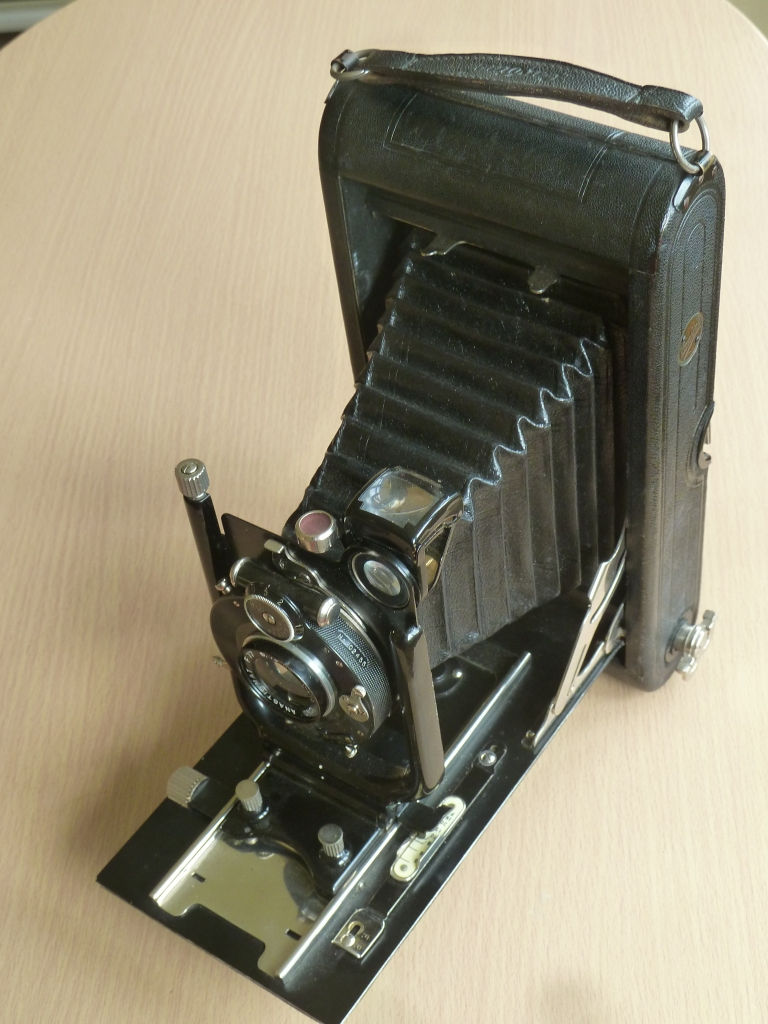Hougton-Butcher Roll Film Ensign Circa 1915
- Kamera Ostalgie

- Apr 14
- 3 min read
Updated: Sep 21
I was unsure as to write a post on this camera or not, it's well over a hundred years old, and maybe not the sort of thing to use these days, but then I thought, no lets do it, if we had been around at the time of the first World War, then this is the type of thing we would have been using, so it could be of interest today. Anyway as I have just 'found' it again, lets have a look !

Well, it's simple and it's basic in modern terms, but so very typical of its time. You press the chrome switch on the right hand side of the camera body and the bed opens up sharply, just one spring operates this bed and over a hundred years on it's still springy! You then grasp the two lugs seen here at the bottom of the lens standard and gently pull the lens forward along an unusual wide chrome plated guide. The lens panel then locates with the plated focus guide on the left with a reassuring click.

The plated lens guide is rather unusual, most cameras of the period had two thin guides for the lens standard to run out on. They tended to get worn and slack if roughly handled and the lens standards were no longer vertical. This meant out of focus pictures. But here, the Ensign just has one wide guide for the standard to run on, which is much simpler, stronger and better looking than the usual method. Today the camera is still rock solid.

The lens standard has a little lug at the back of it, which locks into focus guide my gently pushing it down then clicks into the first notch which is for infinity.

The whole of the plated guide is on a sprung pivot, so lets say you want to focus on a close up subject just five feet away, you then push the chrome guide down and slide the lens standard forwards until it clicks into the correct notch marked 5 feet. Brilliant, simple, ingenious even and it is still working today.

The Ensigns lens is marked 4 Inch Lumar Anastigmatic, f6.3. It even has a pat. number, in this case No157037. Then underneath it says very proudly BRITISH MADE. Now I don't know a great deal about Lumar lenses but didn't Corfield use the name on their Periflex ?

The shutter is marked ''Trichro'' It looks fairly simple, with just 100th, 50th and 25th of a second plus B and T. It seems like it was made in house by Houghton Butcher Manufacturing Company Limited as it says so on the shutter face. Its still operational now, but not sure how accurate it still is!

Although the lens is relatively slow at f6.3 just look what it stops down to, f32 and f45 !

The back of the camera is embossed with MADE IN ENGLAND BY THEHOUGHTON-BUTCHER MFG.CO.LTD. LONDON. I like that.

The viewfinder, well lets just say it's not that clear!

A nice detail is the name 'Ensign' on the carrying handle.

Other nice details are the film wind on key above and the little foot stand engraved Ensign below.

Film transport is by watching the numbers through the little red window. It always used to fascinate me that, when I was a kid for some reason.

The camera back slides off in one, to reveal....

Now that is what you call medium format! It took 2¼×3¼ (6×9cm) negatives on Ensign 2¼B film. Now I think Ensign 2¼ B film is the equivalent to current (Kodak) 120 film, which means..... no I'm not, this one is strictly for display, but yes in theory you could run a film through it !


For best results use Ensign- Speedy 2¼ B Roll Film.

I suppose back in 1915 these negatives would mainly be contact printed and made into 2¼×3¼ (6×9cm) positives. Now I wonder what they would enlarge like ?
To sum up, I really like this camera, no, not to use today, but the design details really intrigue me, as a nice object, a piece of history, it really fits the bill, but no I won't be loading any rolls of colour slide film into it and photographing landscapes!
I hope this latest post was of interest to you, if you are interested in Vintage cameras please let me know and I will do a few more posts on the older cameras now and again just for fun!
Take care
Phil



